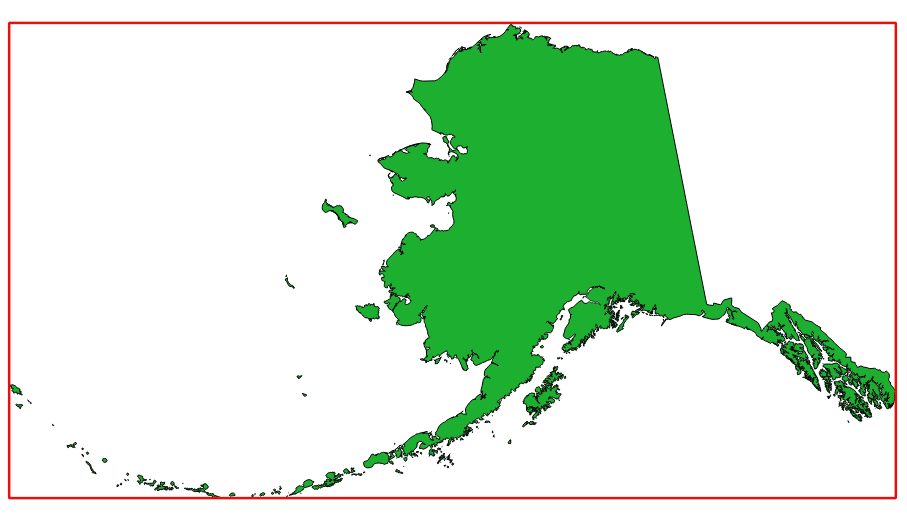23.1.6. Layer tools¶
23.1.6.1. Extract layer extent¶
Generates a vector layer with the minimum bounding box (rectangle with N-S orientation) that covers all the input features.
The output layer contains a single bounding box for the whole input layer.

Fig. 23.6 In red the bounding box of the source layer¶
Default menu:
23.1.6.1.1. Parâmetros¶
Etiqueta |
Nome |
Tipo |
Descrição |
|---|---|---|---|
Camada |
|
[layer] |
Camada de entrada |
Extent |
|
[vector: polygon] Default: |
Specify the polygon vector layer for the output extent. One of:
A codificação do arquivo também pode ser alterada aqui. |
23.1.6.1.2. Saídas¶
Etiqueta |
Nome |
Tipo |
Descrição |
|---|---|---|---|
Extent |
|
[vector: polygon] |
Output (polygon) vector layer with the extent (minimum bounding box) |
23.1.6.1.3. Python code¶
Algorithm ID: qgis:polygonfromlayerextent
import processing
processing.run("algorithm_id", {parameter_dictionary})
The algorithm id is displayed when you hover over the algorithm in the Processing Toolbox. The parameter dictionary provides the parameter NAMEs and values. See Usando os algoritmos do processamento a partir do Terminal Python. for details on how to run processing algorithms from the Python console.